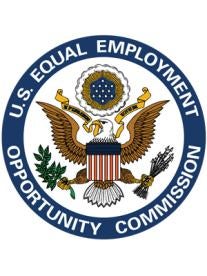In the past year, the Equal Employment Opportunity Commission (EEOC) has filed three lawsuits against employers asserting that their wellness programs violated the Americans with Disabilities Act (ADA). The EEOC’s position in these cases is at odds with the guidance issued by other government agencies relating to the Health Insurance Portability and Accountability Act (HIPAA) and has left employers confused about where their wellness programs stand. A particular source of this confusion was over the EEOC’s position on the application of the ADA to wellness programs, as it had not issued any specific guidance on such issues in the 22 years since the ADA had become effective.
On April 20, 2015, the EEOC released proposed regulations regarding how the ADA applies to employer wellness programs. Because the regulations are in proposed format, compliance with their requirements is not yet required.
Assuming the EEOC adopts the regulations in their present form, there will continue to exist an inconsistency between the EEOC’s guidance and the wellness regulations released by the other agencies. Therefore, employers that sponsor or are considering implementing wellness programs will need to understand the various limits imposed under both laws to properly administer their wellness program.
Background
A wellness program is a program of health promotion or disease prevention. Wellness programs were recognized under HIPAA as a method by which an employer could discriminate on the basis of a health factor without violating HIPAA. HIPAA divided wellness programs into two types, but the Affordable Care Act and ensuing regulations slightly modified this distinction. Based upon those laws, wellness programs generally fall into two categories: participatory and health contingent.
Participatory Wellness Programs: Participatory wellness programs either do not provide a reward or do not include any conditions for obtaining a reward that are based on an individual satisfying a standard related to a health factor. Participatory programs may require biometric screening and still be called participatory, even though they may require giving blood.
Health Contingent Wellness Programs: Health contingent wellness programs require an individual to satisfy a standard related to a health factor to obtain a requirement (or require an individual to undertake more than a similarly situated individual based on a health factor in order to obtain the same reward). Health contingent wellness programs come in two types: activity-only and outcome-based. Activity-only programs require individuals to perform or complete an activity related to a health factor in order to obtain a reward, for example, walk two miles per week, but they do not require an individual to attain or maintain a specific health outcome. Outcome-based programs require individuals to attain or maintain a specific health outcome in order to obtain a reward, for example, maintain a body mass index below a particular threshold or refrain from tobacco use.
HIPAA imposes certain other requirements on health contingent programs. For purposes of this alert, the most relevant of these requirements is that the total reward offered to an individual under a health contingent wellness program cannot exceed 30% of the total cost of employee-only coverage under the employer’s medical plan (or 50% to the extent that the additional percentage is attributed to tobacco use prevention or cessation). No similar limit exists under HIPAA for participatory wellness programs. In addition, HIPAA requires that health contingent wellness programs provide the participant with an alternative means to achieve the program’s requirements to obtain the incentive where a physician advises that the employee’s condition renders him unable to perform the required task to obtain the incentive.
While the ADA permits employees to require medical information from employees that is “job-related and consistent with business necessity,” it generally prohibits employers from making disability-related inquiries or requiring general medical examination with two notable exceptions.
First, an employer may seek specific disability-related information while discussing possible reasonable accommodations. Second, the ADA provides that an employer may “conduct voluntary medical examinations including voluntary medical histories, which are part of an employee health program available to employees at that work site.” The EEOC construes this to include wellness programs. Nevertheless, the EEOC takes the position that a wellness program must be voluntary in order to satisfy the ADA restriction. The EEOC previously stated that a program would be voluntary where the employer neither required participation nor penalized employees who did not participate.
EEOC’s Proposed Regulations
The EEOC’s regulations seek to clarify what the EEOC considered “voluntary” and therefore permitted under the ADA.
First, the new proposed regulations state that an employer’s program will be voluntary where the incentive (reward/penalty) to participate does not exceed 30% of the total cost of employee-only coverage. The EEOC intends to expand this limit to participatory wellness programs that ask an employee to respond to a disability-related inquiry or undergo a medical examination. This new restriction on participatory wellness programs, if adopted, will impose restrictions on an employer’s use of certain health risk assessment processes and questions.
Second, the proposed regulations impose a restriction on smoking cessation programs. Under the proposed rules, if tobacco use is determined through a medical test like a blood draw to determine whether or not nicotine has been used, then the rule limiting the reward/penalty to 30% of the cost of employee-only coverage applies and the additional 20% differential permitted under HIPAA does not apply for purposes of ADA compliance. On the other hand, if the individual merely answers “yes” to tobacco use on a questionnaire, the employer could impose the additional 20%, rendering the total “carrot” to be 50% rather than 30%.
Third, the employer must provide notice that clearly explains what medical information will be obtained, who will receive the information, how it will be used, any restrictions on its disclosure, and the methods the covered entity (in this context, the employer) will use to prevent improper disclosure of the medical information.
The rule allows the disclosure of medical information obtained by the wellness program (typically through a service provider) to employers only in aggregate form, except as needed to administer the health plan. For self-funded group health plans and insured plans that are not in a hands-off status, the employer may satisfy the requirement for confidentiality through the plan’s own HIPAA privacy and security activities. The EEOC is requesting comments on this proposed rule.
What should employers do now?
Since these are proposed regulations, the landscape is still somewhat unknown. Certainly, employers will need to continue to structure programs to comply with HIPAA and related regulations published by the Department of Health and Human Services. However, employers should also be aware that due to the current legal climate, wellness programs carry somewhat higher risk and should be monitored.





 i
i

